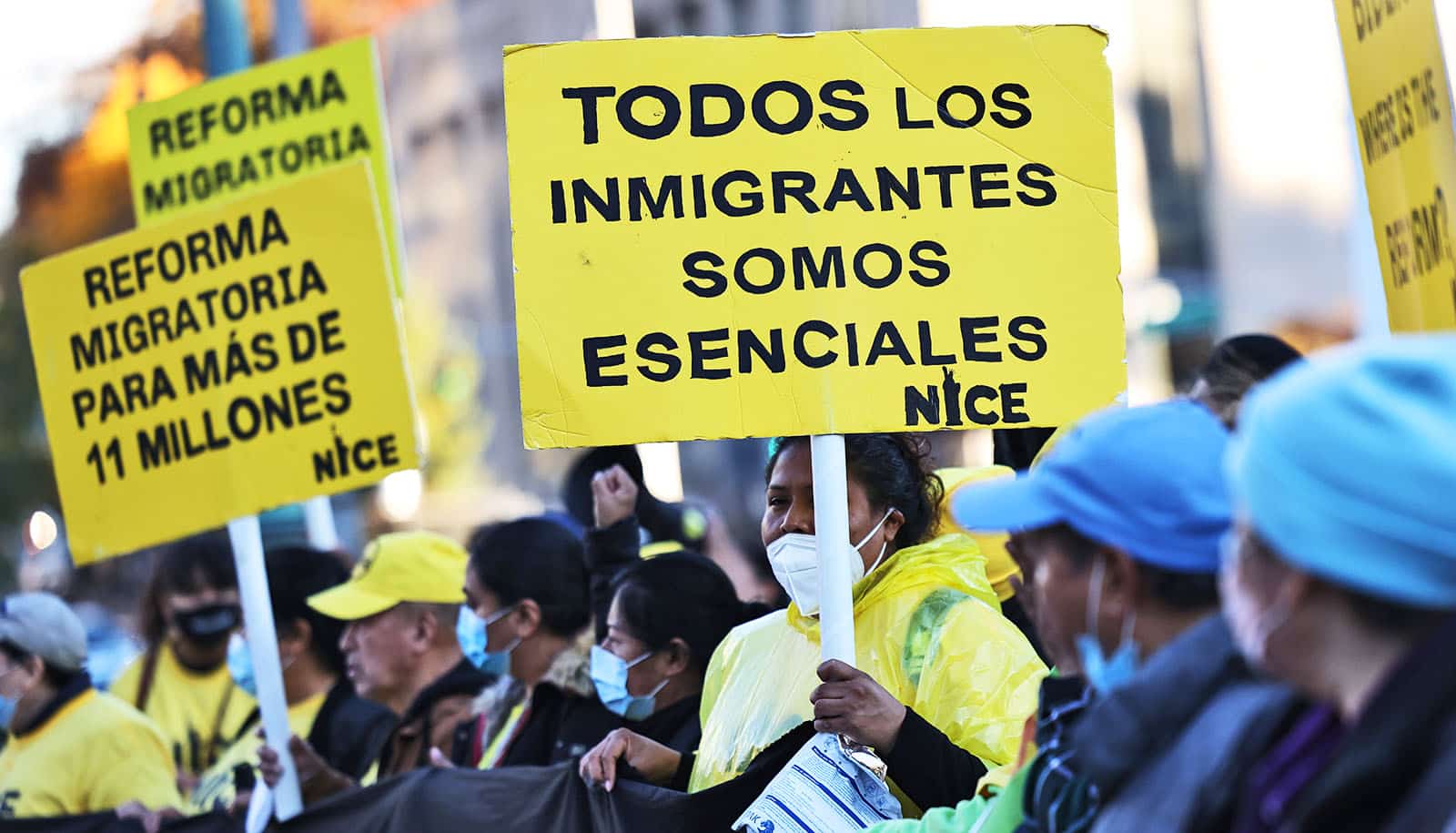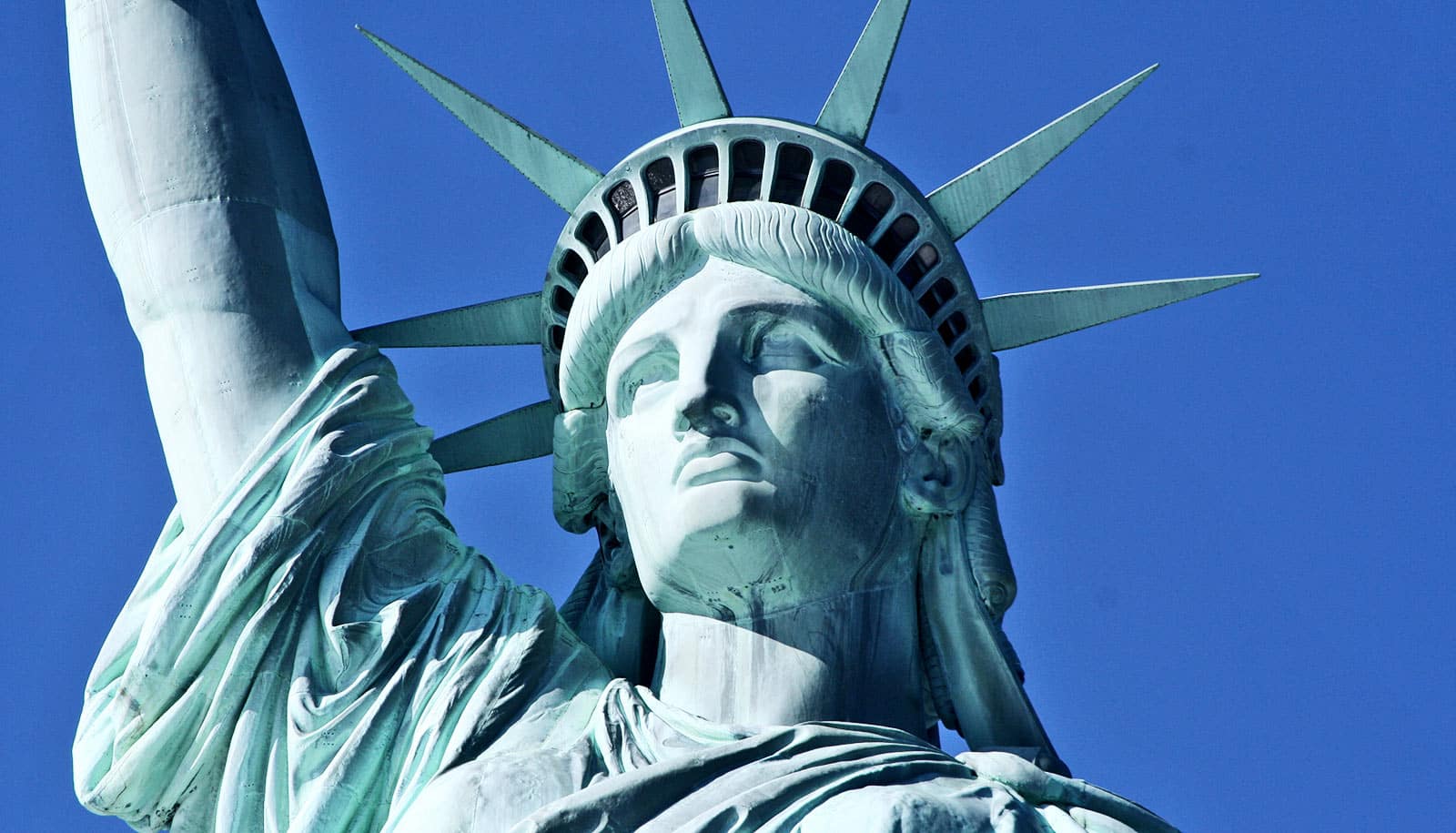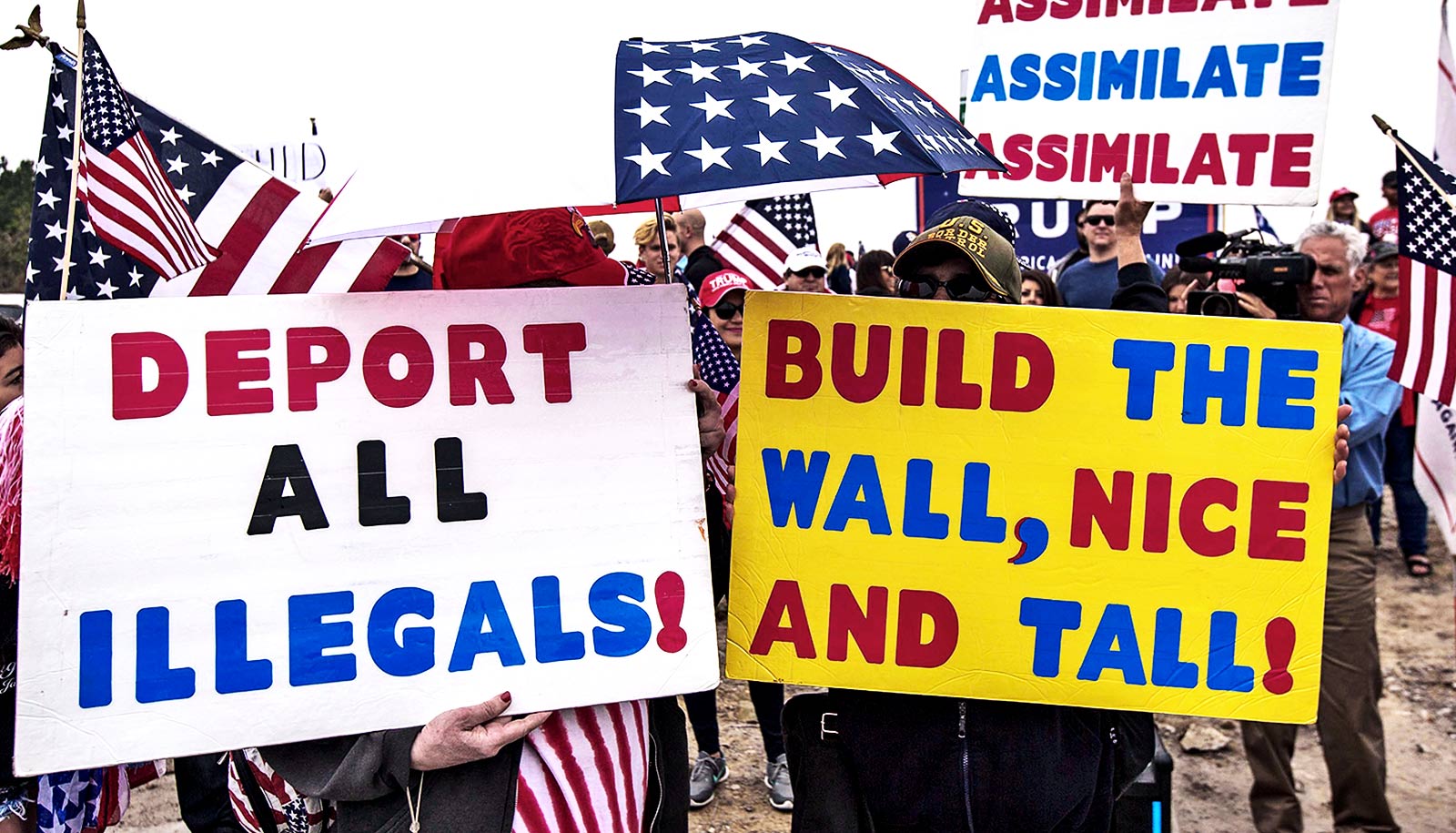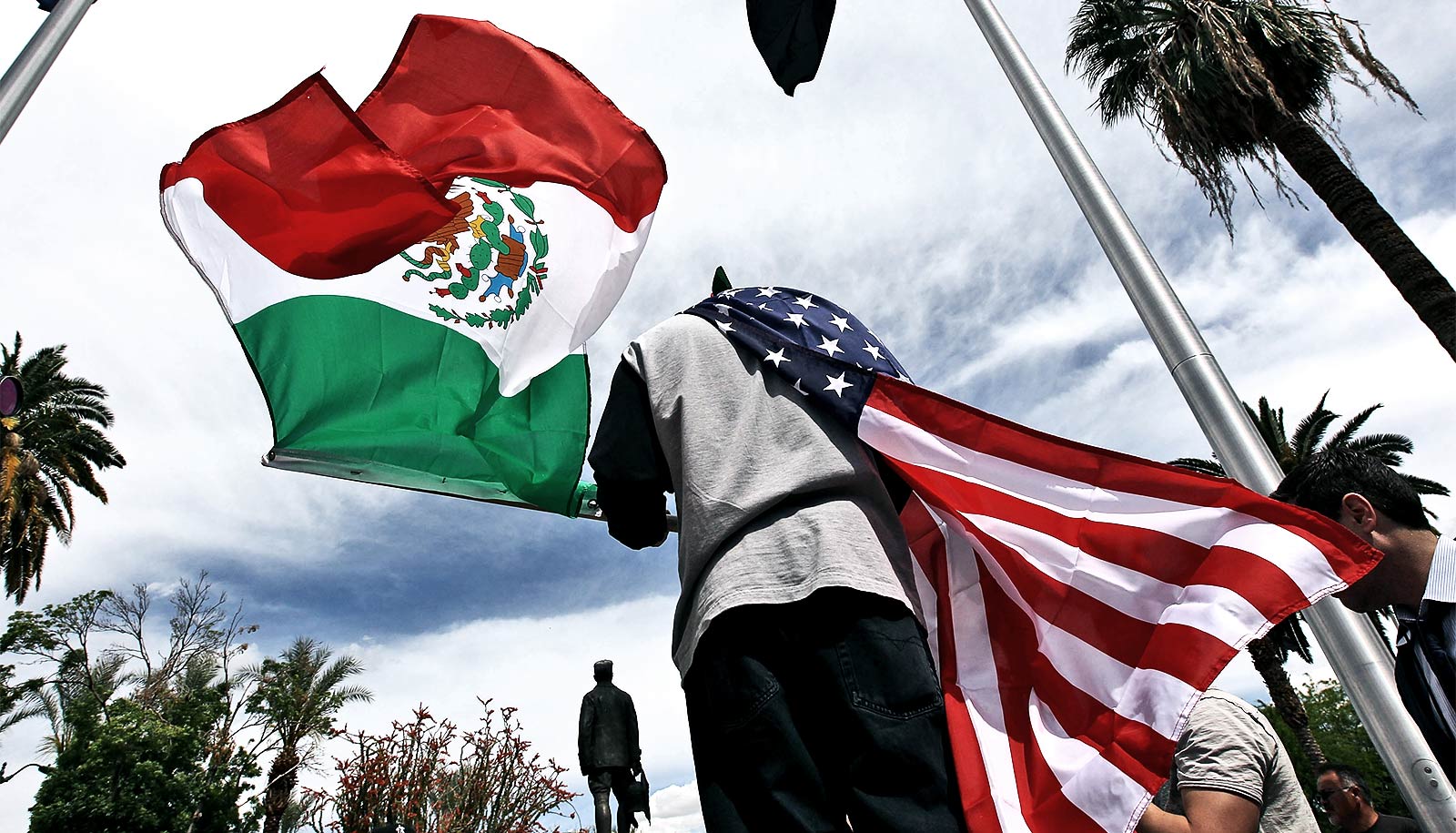Has immigration to the United States ever been more contentious? A new book explores the history.
Immigration: An American History (Yale University Press, 2022) is a sweeping new account that recounts the experiences of—and reactions to—those arriving from every corner of the globe, beginning with the “founding immigrants” of the colonial period. Coauthors Hasia Diner, professor of American Jewish history at New York University, and Carl J. Bon Tempo, an associate professor at the University at Albany, identify several recurring themes within what they describe as the centuries-long “drama” of immigration.
Among them are “the nation’s long and abiding obsession with race” and its changing definitions, as well as the enduring impact of native-born white Americans’ reactions to new arrivals on state policy and public life. They argue that there was never a time when the issue of immigration was not political, writing, “Americans have simultaneously welcomed and rejected, lauded and reviled immigrants. They have debated and divided over issues such as whether immigrants strengthen or harm, enrich or impoverish our nation.”
Russia’s invasion of Ukraine, along with the United States’ withdrawal from Afghanistan, political and economic turmoil in Venezuela, and various other environmental and geopolitical crises have carried those debates and disagreements into the present. And while the intensity of the rhetoric and the engagement of the public with the issue may be familiar, there is, the historians conclude, something new at play in our present moment: views on how to address the complexities of immigration have become increasingly partisan.
Historically, “there were always Republicans and Democrats who were for restriction as well as both Republicans and Democrats who were progressive on immigration,” Diner says. “It was bi-partisan, both for and against. This goes back to the early part of the 20th century. In these decades, you couldn’t say which party was the party for immigration restriction or which party was against it.”
But in the years since 9/11, something fundamental seems to have shifted. “The bipartisan basis of immigration politics, which emphasized compromise between liberalizer and restrictionist proposals, ended in the 21st century,” Diner and Bon Tempo write.
“The two major parties polarized and homogenized on immigration: the GOP fervently embraced nativism and anti-newcomer politics, its immigration advocates effectively silenced,” they continue. “The Democratic Party contained more diversity on immigration admissions and border policy, but it stood in favor of immigrant rights and strongly against the demonization of authorized and unauthorized newcomers.”
In other words, Diner says, “What’s happened over the past 20 years is that immigration now mirrors our red and blue camps, creating unbridgeable sides to a chasm.”
Here, Diner talks about the forces that have driven immigration over the years, what earlier periods of nativist sentiment can illuminate about our own, and about immigrants’ role in the nation’s “common good”:
The United States is known as a “nation of immigrants.” How do you square that moniker with the historic record of anti-immigration laws enacted here—such as the Alien and Sedition Acts in 1798, the Chinese Exclusion Act in 1882, and the McCarran-Walter Act in 1952—that you explore in the book?
One thing to keep in mind is that this notion of a nation of immigrants is not a formal or official kind of designation. And it’s something that some segments of the American public developed as a kind of progressive-oriented embrace, or moniker, as you call it—a way of thinking about themselves and about the larger society. But they develop that idea in relation to or in contradiction of the constant, simultaneous statements and actions of those who said “no” to more immigration.
And even these supporters of immigration said, essentially, “Sure, we’ll take immigrants, but only certain kinds of immigrants. And yes, immigrants are fine if they meet certain criteria that we get to establish.”
This was always set against the fact that, for much of the nation’s history, the nation absolutely, desperately needed immigrants. There would have been no United States—no what historians once called the “peopling of the nation,” and of the continent—without immigrants. And these would include, of course, those from the British Isles, who in the 17th century said they wanted to go to Jamestown or Plymouth or Massachusetts Bay. They were immigrants, too.
You write about how climate change around the globe has prompted migration this century. Does this represent a new force influencing immigration to the US?
Not at all. One of the great causes of migrations over time are localized famines. The Irish potato famine in the mid-19th century has to be the biggest one of them all. There was a major fungal infection of the grape crop in Italy in the 1870s and 1880s, which is when the first waves of immigrants from northern Italy came to the United States.
There was a famine in the eastern part of the German empire and into the western part of the Russian empire, Lithuania, in the 1860s. And you suddenly see people coming from the eastern part of the German empire and the western part of the Russian empire in response to what was one disastrous harvest after another. So these natural disasters were always at play.
But I think the level of the threat to the environment today is something that we never saw before. And it’s global.
The book covers hundreds of years of immigration history—beginning, as you noted, with the “Founding Immigrants” in the 17th and, later, 18th centuries. What’s different about today’s immigrants compared with those who preceded them?
The major difference between immigrants in the past, whenever that past was, and today is the solidity of the legal system which is in place to weed out those who are seen as “unwanted.” So it’s the laws that are different rather than the people, even though people are coming from different places now than they did in the 1950s and from different places then than came in the 1920s or the 1880s or the 1760s.
But while the geographic scope always changed, for the most part, we’re talking about the same kinds of people. Young. In a way, risk-takers. People who feel they cannot stay put because the places where they live offer them either no opportunity or tremendous and dangerous challenges.
And they came in family units. They came in distinct cohort communities—people from a particular region tended to come at the same time and develop networks.
Otherwise it’s the legal system that makes them different. In 1800, there were people who the country didn’t want. But there was so much chance for somebody to come in unnoticed, uncounted, and undocumented, and then head off to the Appalachian Mountains and nobody would know where they were. Today, the level of surveillance and the size of the bureaucracy, along with the intricacy of the laws, is something that never existed before.
Does your research show that these governmental changes—in our laws and law enforcement—have been brought about by necessity? Or is there something else that’s driving this?
Whatever attempts there were historically to regulate immigration were always political. The relationship between Americans and immigration never strayed far from politics. But what we have now, I’d say, are two things. First, the technology is so different and so much more powerful. And secondly, while in the past it was always connected to politics, the level of that politics was so less harsh. I think, obviously, the Trump administration and the degree of demonizing immigrants that came out of it was really unprecedented.
If today’s views on immigration are largely party specific, does that dampen our hopes for addressing the current circumstances through governmental action?
I think what it’s going to take is a transformation of the parties as we know them, and a kind of return to what I think of as sanity—acknowledging that all of these issues are complicated.
However, if history is any precedent, the periods with the most immigrants have tended to be the periods of the greatest economic productivity. Immigrants are dynamos of job creation, both because they do the work that Americans don’t want to do and because they also become the engines of the creation of small business. And each one of those small businesses generates jobs and generates income. Overall, the fact is that any immigrant who comes in essentially is paying taxes every time they go to the grocery store to buy a quart of milk or a pack of chewing gum. There’s no point in time where immigrants are, or were, a drain on the economy, because they are adding to the common good.
Source: NYU



